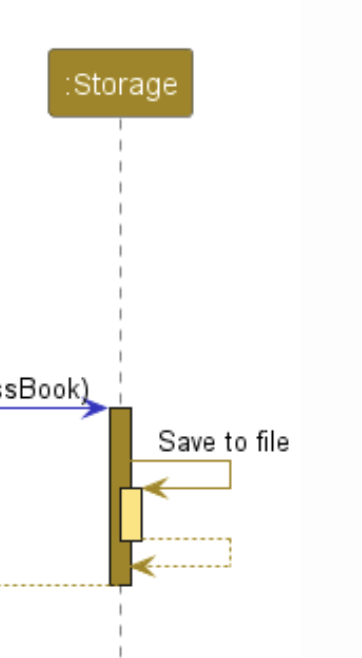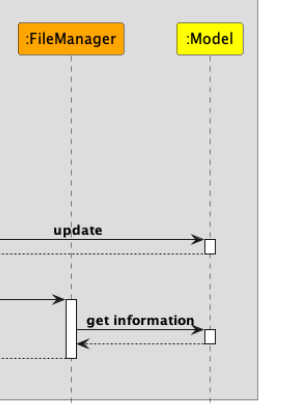[IMPORTANT!: Please do not edit or reply to this comment using the GitHub UI. You can respond to it using CATcher during the next phase of the PE]
Team's Response
Thank you for the response! We are not using the actual name of the method is because the method name is too long and by adding it would make the diagram less clear. Here we are trying to show an overview of the interactions of the components. Therefore, we omit the actual method name and only put its purpose to make the diagram more clear and concise.

Here is an example given in the AddressBook-Level3 developer guide from the course website:

The 'Original' Bug
[The team marked this bug as a duplicate of the following bug]
Method name not following the actual name
Note from the teaching team: This bug was reported during the Part II (Evaluating Documents) stage of the PE. You may reject this bug if it is not related to the quality of documentation.

It seems that the sequence diagram refers to an action by a user and gives it a general name, like this "get information". The method call in a Sequence Diagram should instead use the actual name of the method. or, could it be a simple typo instead (like the method is called "getInformation"?)
[original: nus-cs2113-AY2324S2/pe-interim#49] [original labels: severity.Low type.DocumentationBug]
Their Response to the 'Original' Bug
[This is the team's response to the above 'original' bug]
Thank you for your testing! We are not using the actual name of the method is because the method name is too long and by adding it would make the diagram less clear. Here we are trying to show an overview of the interactions of the components. Therefore, we omit the actual method name and only put its purpose to make the diagram more clear and concise.
Here is an example given in the AddressBook-Level3 developer guide from the course website:
Items for the Tester to Verify
:question: Issue duplicate status
Team chose to mark this issue as a duplicate of another issue (as explained in the Team's response above)
- [ ] I disagree
Reason for disagreement: [replace this with your reason]
## :question: Issue response Team chose [`response.NotInScope`] - [ ] I disagree **Reason for disagreement:** [replace this with your reason]
## :question: Issue severity Team chose [`severity.Low`] Originally [`severity.VeryLow`] - [ ] I disagree **Reason for disagreement:** [replace this with your reason]
Just for clarity sake, a method call in the Sequence diagram should be given a "()" to indicate that it is a method. e.g. "update()"